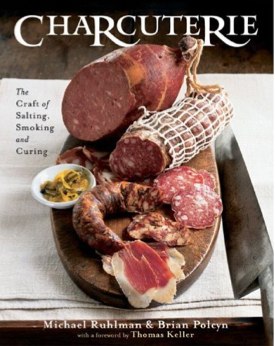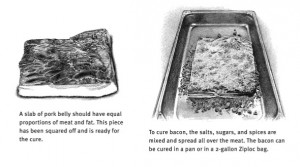Charcuterie: The Craft of Salting, Smoking, and Curing

Practical guide to the chemistry of meat preparation and preservation
Opened my eyes to many facets of charcuterie, including the chemistry of meat preparation and preservation. It’s well written, and lay people who are not professional cooks can easily understand it. Reading this book changed the way I think about my home cooking with regard to meat preparation. Contains many “Aha!” moments.
07/30/13Excerpt
Preventing Trichinosis by Freezing
Trichinosis, a foodborne sickness caused by the larvae of the Trichenella worm in pork and wild game, was once common in the United States, mainly contracted by eating pork that hadn't been thoroughly cooked. Today, pork is far less likely to carry the larvae than are wild game, and the disease is relatively rare. About 38 cases were recorded each year during the 1990s, according to the Centers for Disease Control and Prevention. And since then, regulations in how pigs are fed, as well as increasingly informed consumers and the ease of freezing meat, have also contributed to the reduced incidence.
Nevertheless, trichinosis does exist, but preventing the remote possibility of its occurrence is easy, and in some cases a necessary precaution. Though many chefs who dry cure sausage consider freezing meat sacrilege, as a precaution, we recommend that pork that is to be dry cured (that is, not cooked) be frozen before using. The Centers for Disease Control says that pork less than 6 inches/15 cm thick can be frozen for 20 days at 5°F/-15°C or less to kill the trichinosis larva. The freezing time can be shortened by lowering the temperature to -10°F/-23°C (for 12 days) and -20°F/-30°C (for 6 days).
*
Charcuterie: The Craft of Salting, Smoking, and Curing Michael Ruhlman & Brian Polcyn 2005, 320 pages $25








